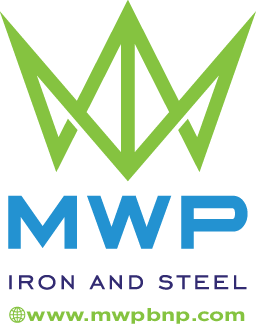Steel Inventory Optimization
Steel Inventory Optimization: As experts in supply chain management, we understand the importance of optimized inventory levels for steel distributors and fabricators. Carrying too much or too little stock can negatively impact cash flow, customer service, and overall business performance.
Implementing practical inventory management strategies ensures businesses have the right products available at the right time. This begins with thorough demand forecasting based on historical sales data, planned projects, seasonal trends, and macroeconomic indicators.
Forecasts are used to determine appropriate order quantities, keeping stock levels high enough to avoid stockouts without overburdening warehousing costs. A just-in-time (JIT) approach aims to replenish inventory only as products are needed to minimize carrying costs.
Modern inventory management systems help track stock movements, generate reorder reports, and project future requirements. Integrating such software with accounting and CRM platforms creates greater visibility across the supply chain.
Improving Material Flows and Logistics
Optimizing steel flows involves assessing current processes for opportunities to streamline material movements. Consolidating inventories into centralized locations takes advantage of scaling benefits while reducing surplus stock maintained at multiple sites.
Load optimization software determines the most efficient packing configurations to maximize truck or container space utilization. This reduces freight costs significantly. Pull systems like vendor-managed inventory shift inventory holding responsibility to suppliers until the point of consumption.
Multi-echelon inventory models recognize inventory interactions across different inventory locations. This allows a balancing of stock levels cross-facilities based on demand patterns and reorder policies.
Modernizing logistics infrastructure with automated materials handling equipment (MHE) like cranes and forklifts improves storage density and picks/putaway cycle times. Remote sensors provide real-time stock visibility for improved replenishment decisions.
Applying Lean Principles
Inspired by Toyota’s legendary “Lean” system, steel companies seek continuous improvements through waste elimination. Applying Lean principles fosters a culture of maximizing value-add steps while minimizing non-value activities.
Daily huddles identify blockages impeding the smooth flow of materials. Value stream mapping analyzes material and information flows end-to-end to surface bottlenecks. 5S programs (Sort, Straighten, Shine, Standardize, and Sustain) optimize the workspace.
Kaizen events engage cross-functional teams in rapid cycle problem solving. Targeting muda (waste) areas like overproduction, defects, and inventory distortions leads to significant efficiency increases over time.
Proper inventory optimization is crucial for the steel industry. Implementing analysis-backed strategies and a Lean mindset supports outstanding customer fulfillment. Please get in touch to discuss inventory challenges and opportunities within your operations.
